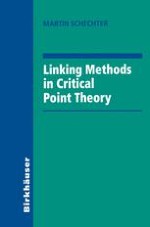1999 | Buch
Über dieses Buch
As is well known, The Great Divide (a.k.a. The Continental Divide) is formed by the Rocky Mountains stretching from north to south across North America. It creates a virtual "stone wall" so high that wind, rain, snow, etc. cannot cross it. This keeps the weather distinct on both sides. Since railroad trains cannot climb steep grades and tunnels through these mountains are almost formidable, the Canadian Pacific Railroad searched for a mountain pass providing the lowest grade for its tracks. Employees discovered a suitable mountain pass, called the Kicking Horse Pass, el. 5404 ft., near Banff, Alberta. (One can speculate as to the reason for the name.) This pass is also used by the Trans-Canada Highway. At the highest point of the pass the railroad tracks are horizontal with mountains rising on both sides. A mountain stream divides into two branches, one flowing into the Atlantic Ocean and the other into the Pacific. One can literally stand (as the author did) with one foot in the Atlantic Ocean and the other in the Pacific. The author has observed many mountain passes in the Rocky Mountains and Alps. What connections do mountain passes have with nonlinear partial dif ferential equations? To find out, read on ...
Anzeige
